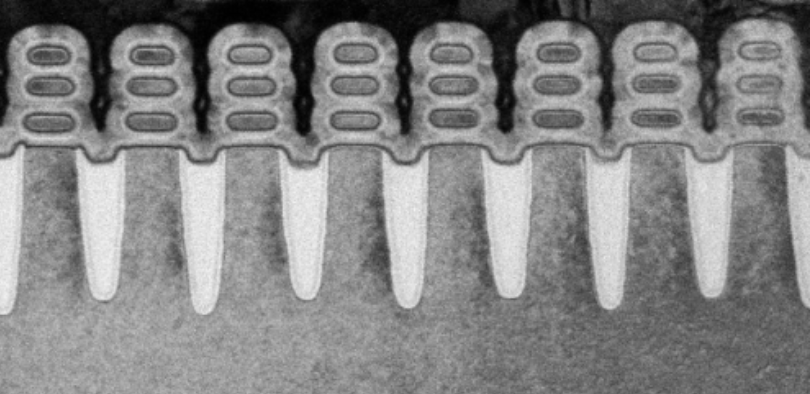Samsung Plans Mass Production of 3nm GAAFET Chips in 2021
Samsung presented plans to begin mass production of 3nm Gate-All-Around field-effect transistors (GAAFET) as early as 2021. The company also confirmed that it would begin its production of 7nm EUV chips in the second half of this year.
FinFET Successor
GAA technology has been in development since the early 2,000 by Samsung and other companies. The GAA transistors are FET transistors that feature four gates on all four sides of a channel to overcome the physical scaling and performance limitations of FinFETs, including supply voltage.
Samsung has been developing its proprietary implementation of GAA technology, called multi-bridge-channel FET (MBCFET) since 2002, according to Ryan Sanghyun Lee, vice president of market for Samsung Foundry. The company noted that its MBCFET technology uses a nanosheet device to enhance gate control, which can lead to significant performance improvements to the transistors.
Samsung Ahead in EUV, GAAFET
Last year, Samsung said that it would use a 4nm GAAFET process as early as 2020. Industry watchers, such as Garner vice-president Samuel Wang, have been skeptical that GAAFET chips would be in production before 2022. However, Wang said that it now looks like Samsung will bring GAAFET chips to production earlier than expected.
Samsung is also expected to be the first to put 7nm EUV chips into production later this year. Although TSMC and Global Foundries are not too far behind in developing EUV chips, Samsung has an advantage because it has already developed its own EUV mask inspection tool internally and no similar commercial tool has been developed yet.
Yongjoo Jeon, a principal engineer with Samsung Foundry, also added that the company is on track to achieve the target defect density for mass production later this year.
Get Tom's Hardware's best news and in-depth reviews, straight to your inbox.
Lucian Armasu is a Contributing Writer for Tom's Hardware US. He covers software news and the issues surrounding privacy and security.
